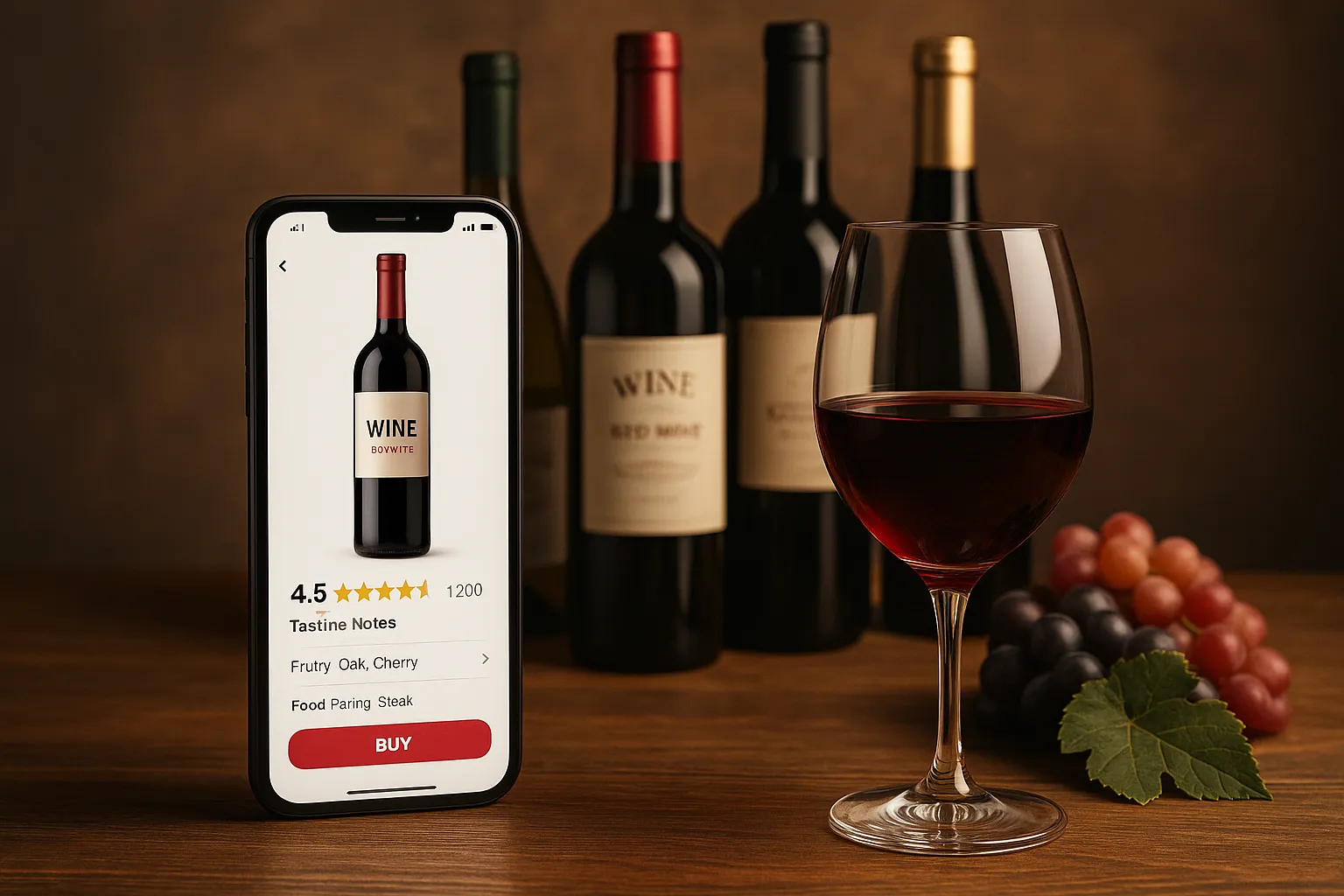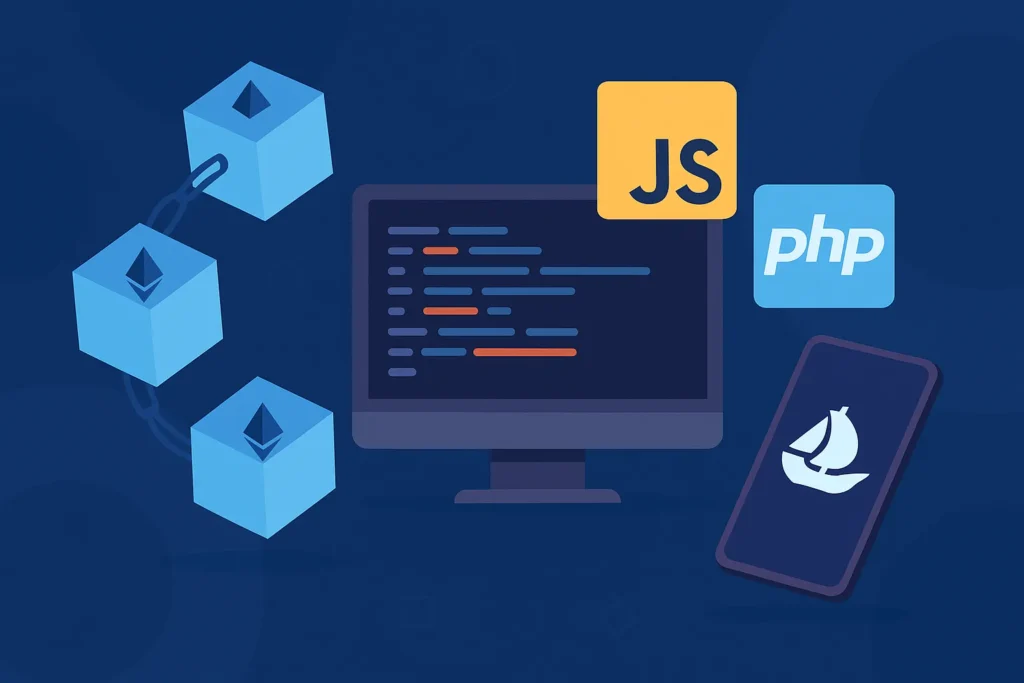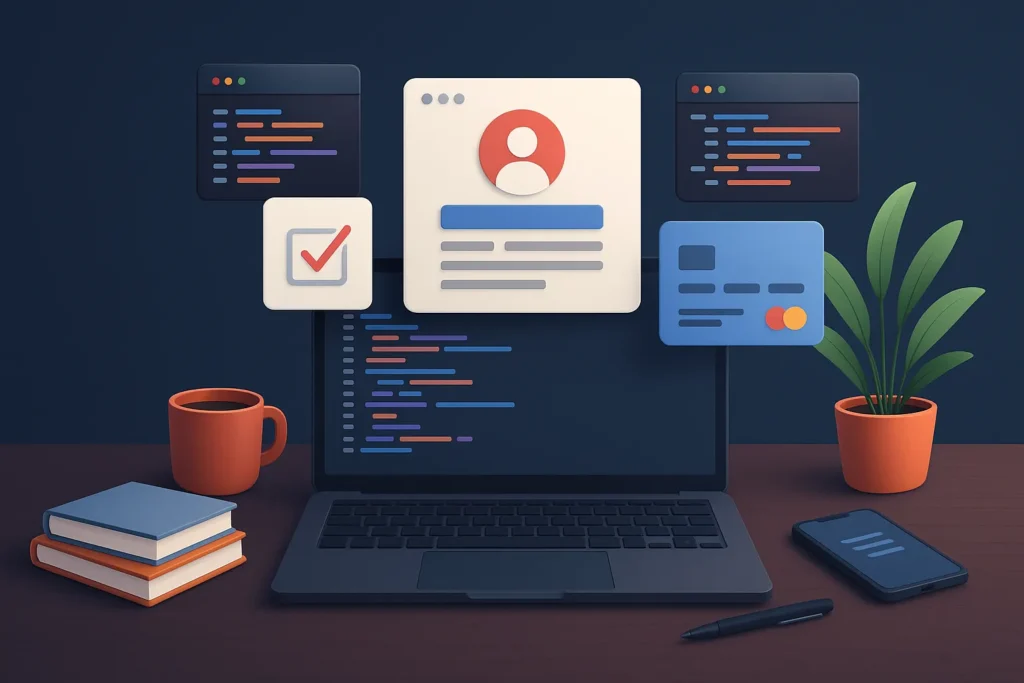Ever scanned a wine bottle at a dinner party just to see if it’s actually worth the hype? Or maybe you’ve stood frozen in a supermarket aisle staring at a wall of reds, whites, and rosés, not knowing which one won’t ruin your dinner plans? If you’ve been there, you’re not alone—and that’s exactly where Vivino swoops in like a sommelier in shining armor.
Vivino didn’t just fill a gap in the market—it tapped into a very real, very common problem: wine is complicated. Ratings, grapes, pairings, price points—it’s enough to make any non-expert cry into their cabernet. But thanks to clever features and crowd-powered insights, Vivino turned every smartphone into a pocket wine advisor.
Whether you’re an app founder, startup junkie, or tech-driven sommelier-to-be, this deep dive into Vivino’s most-loved features is your map to building (or cloning) something equally intoxicating. And if you’re toying with the idea of launching your own wine-centric platform, Miracuves knows exactly how to ferment those ideas into a full-bodied digital product.
Read more: How to Build an App Like Vivino – A Developer’s Guide for JavaScript & PHP Stacks
What Makes Vivino a Grape Success?
Vivino isn’t your average wine catalog—it’s a hybrid beast that blends e-commerce, user-generated content, machine learning, and community reviews into one sleek glass. Think Instagram meets Amazon meets a wine-tasting club. Let’s swirl through its standout features.
1. Label Scanning & Instant Recognition
It all starts with the bottle. Vivino’s label scanner is as easy as point-shoot-sip. Using OCR (optical character recognition) and image recognition, the app decodes label data within seconds and brings up reviews, average pricing, and food pairings.
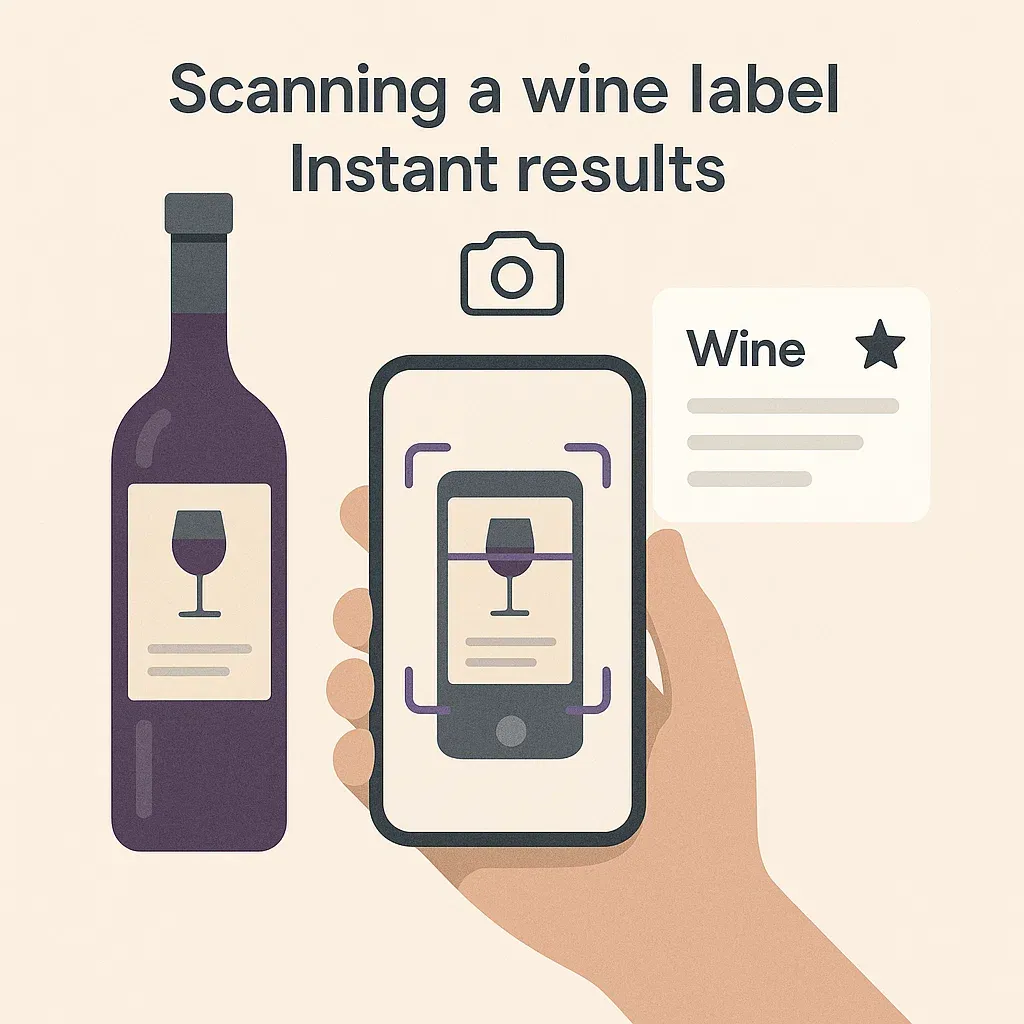
According to App Annie, Vivino’s label scanning is used over 1 million times daily worldwide. That’s a lot of corks.
2. User-Generated Ratings & Reviews
Community is king. Vivino users can rate wines from 1 to 5 stars, write quick notes (“Fruity but too acidic”), and upload pictures. These reviews form the backbone of Vivino’s trust factor—just like TripAdvisor does for travel.
And guess what? Reviews get better over time thanks to AI-curated insights from tasting history and preferences.
3. Personalized Wine Recommendations
Vivino gets smarter the more you sip—literally. It learns your preferences over time and recommends wines tailored to your taste profile. Think: “You liked a Malbec from Argentina? Here’s a Syrah you might love.” The algorithm considers:
- Price points
- Grape variety
- Region
- Vintage
- Community reviews
4. Top Lists & Trending Bottles
Don’t feel like exploring the jungle of 12,000+ wines? Vivino’s curated lists help users jump right into what’s hot:
- Top 10 Wines under $20
- Trending Reds in Spain
- Best Champagne for Brunch (yes, that’s a thing)
This isn’t just good UX; it’s brilliant for affiliate revenue and partner winery promos.
Curated discovery boosts conversion rates by 23% in niche marketplaces, according to CB Insights.
5. Food Pairing Suggestions
You’ve got the steak; now what wine? Vivino uses sommelier-approved databases and AI to recommend pairings like:
- Sushi → Riesling
- Lamb → Bordeaux
- Cheese platter → Literally anything (okay, maybe not Rosé)
It’s like having a virtual wine coach, minus the pretentiousness.
6. Buy Wines Directly via App
Vivino isn’t just about discovery—it’s a revenue machine. Users can buy wines directly from local or international sellers. Features include:
- Geo-localized vendors
- Price comparison
- Delivery options
- Loyalty points
The app takes a commission per transaction—a brilliant monetization loop that keeps the cellar stocked.
7. My Cellar – Digital Wine Rack
Vivino’s “My Cellar” lets users track wines they’ve tasted, want to try, or own already. It functions like a virtual inventory, allowing users to:
- Sort wines by vintage or region
- Rate their personal favorites
- Get reorder reminders
This retention feature turns casual drinkers into loyal app users. Plus, it’s great for building a sense of “ownership” over digital taste history.
8. Tasting History & Wine Journal
Users can log tasting notes, rate with emojis, and write quick flavor cues (e.g., “cherry, leather, hints of oak”). It’s part diary, part wine education.
This feature humanizes the app and encourages more frequent use—especially by millennial and Gen Z drinkers who love a good memory log.
Why These Features Matter to Entrepreneurs
Vivino isn’t just a wine app. It’s a masterclass in user-centered design and retention. The combination of scanning tech, community input, curated discovery, and seamless eCommerce hits all the sweet spots:
- Engagement: Label scanning = instant gratification
- Trust: Reviews and ratings from real people
- Retention: Personal cellar and recommendation loop
- Revenue: In-app purchases, partner affiliate links, and ads
If you’re looking to build the Vivino of X—be it for craft beer, artisanal cheese, rare books, or local art—these features form a blueprint that’s hard to beat.
Emerging Trends in WineTech & Discovery Apps
The digital wine space is still evolving—pun intended. Here are a few future-forward trends you can bake into your own platform:
- Voice assistant wine searches (think: “Hey Siri, recommend a red for lasagna”)
- Augmented reality labels (à la 19 Crimes)
- Subscription-based sommelier services
- Wine NFTs & blockchain authenticity checks
- AI-generated tasting notes based on user reviews
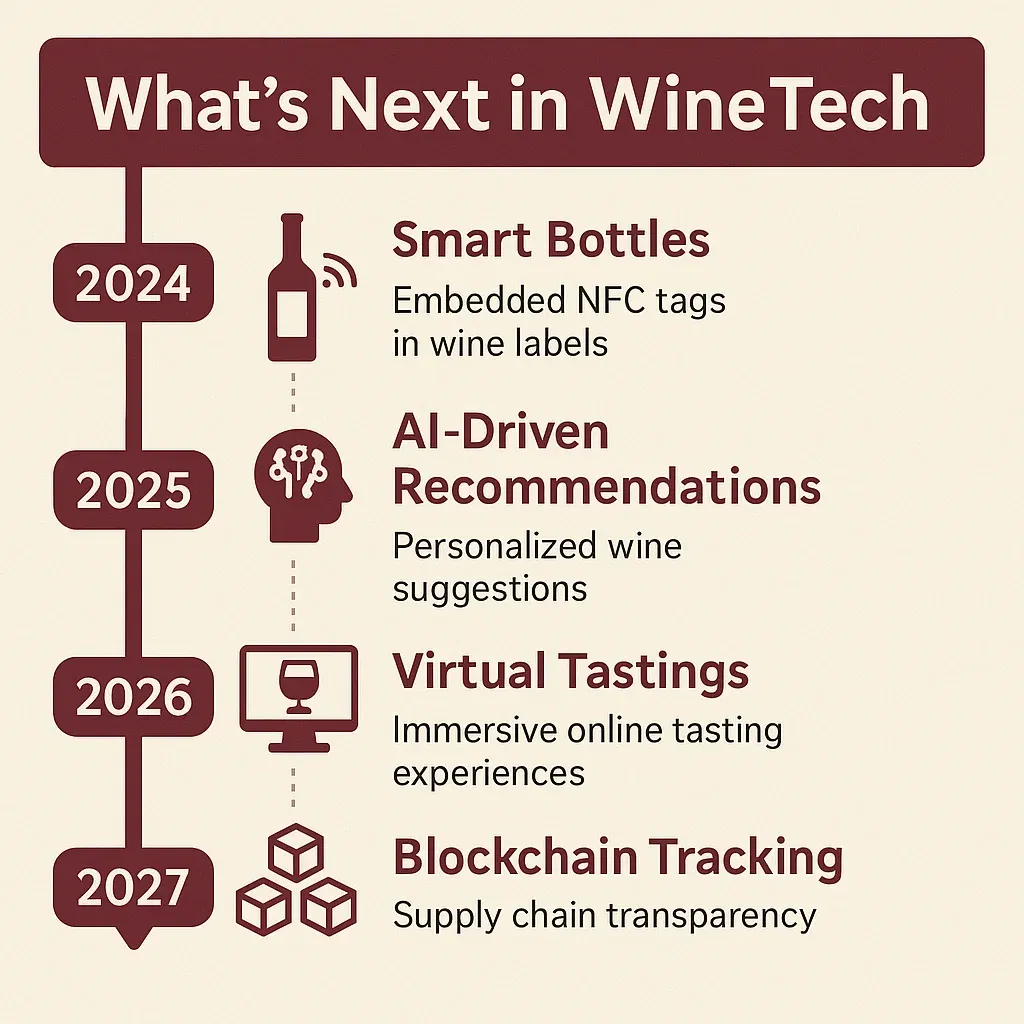
Read more: Best Vivino Clone Scripts in 2025: Features & Pricing Compared
Conclusion
Vivino nailed the formula: simplify something intimidating, wrap it in tech, and build a loyal community around it. Every feature in the app is designed to make the wine world less snobby and more sippable.
As wine lovers get more digital, and discovery becomes mobile-first, there’s enormous potential in replicating Vivino’s feature stack for other verticals.
At Miracuves, we help innovators launch high-performance app clones that are fast, scalable, and monetization-ready. Ready to turn your idea into reality? Let’s build together.
FAQs
Q:1 What is Vivino used for?
Vivino is a wine discovery app where users can scan labels, read reviews, get personalized recommendations, and buy wine online.
Q:2 How does Vivino’s label scanner work?
It uses optical character recognition (OCR) and image recognition to identify wines instantly and match them with user-submitted data.
Q:3 Can you buy wine directly on Vivino?
Yes! Vivino allows in-app purchases by connecting users with sellers and wine shops in their region.
Q:4 Is Vivino free to use?
Absolutely. The core features are free. Some advanced analytics or vendor tools may be behind a paywall.
Q:5 Does Vivino recommend wine pairings?
Yes. Based on wine type, flavor, and occasion, Vivino offers intelligent food pairing suggestions.
Q:6 How can I build an app like Vivino?
Partner with an expert development company like Miracuves that understands clone architecture, UX for discovery apps, and monetization models.
Related Articles:



